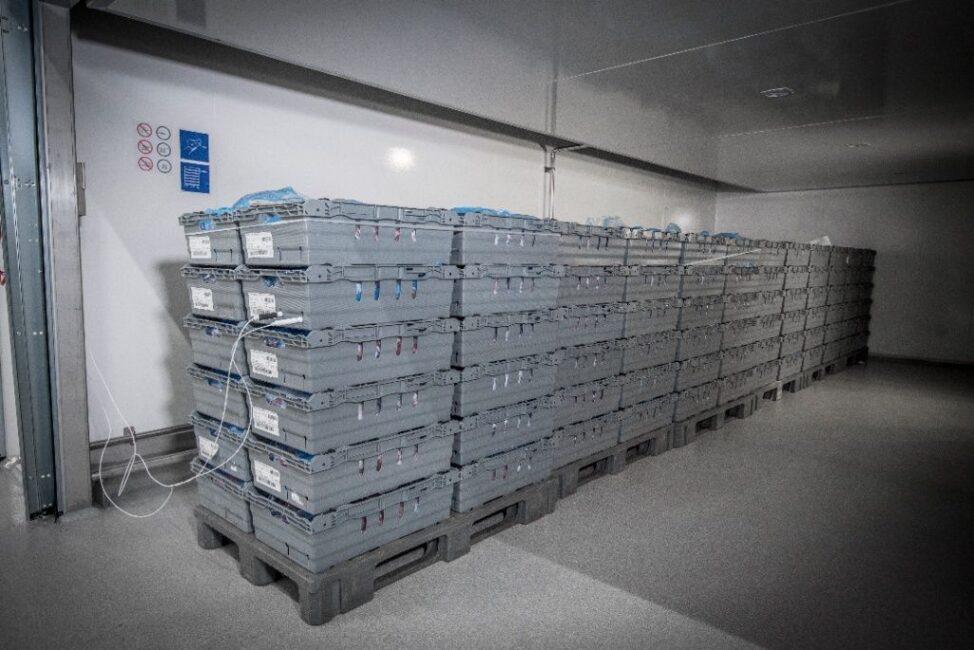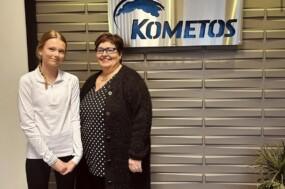
Advanced Features of Industrial Defrosting Equipment for Food Processing
Fast Facts: What You’ll Learn in This Guide
-
Advanced thawing technology is essential for food processing efficiency. Traditional methods are often slow and inconsistent, while modern solutions like airflow-based thawing, RF, microwave, and vacuum-steam technologies ensure faster, more reliable results.
-
The best thawing systems prioritize uniformity and precision. Maintaining consistent airflow and precise temperature control (-20°C to +2°C) prevents product spoilage, reduces drip loss, and ensures food safety.
-
High-capacity thawing solutions improve productivity. Whether handling thousands of kilograms per day or operating on a smaller scale, the right system must align with daily processing volumes and long-term scalability.
-
Seamless integration into production workflows enhances efficiency. The right equipment should fit existing facility layouts, work alongside conveyors and storage systems, and support automated monitoring via PLC and Ethernet connectivity.
-
Energy-efficient design leads to cost savings. Modern thawing systems use hermetically sealed refrigeration compressors and optimized airflow, reducing operational costs and environmental impact.
-
Customization is key to meeting diverse business needs. Different product types (meat, seafood, bakery) and packaging formats (pallets, trolleys, E2 boxes) require adaptable systems with adjustable airflow and multi-temperature settings.
-
Investing in the right thawing technology ensures long-term reliability. A well-chosen thawing system improves operational efficiency, maintains product quality, and optimizes costs, setting food processors up for success.
Advanced Industrial Defrosting Technologies Explained
Industrial food processing demands efficient thawing methods to maintain product quality and streamline production. Advanced defrosting technologies, including radio frequency (RF), microwave, vacuum-steam, and airflow-based thawing, offer different benefits depending on the type of food, processing speed, and energy efficiency requirements.
RF thawing uses electromagnetic fields to heat frozen products from the inside out, ensuring even temperature distribution. This method reduces thawing time while minimizing texture degradation. However, it requires precise calibration to avoid overheating certain areas. Microwave thawing operates similarly but penetrates deeper into the product, allowing for rapid defrosting. While effective, it demands careful control to prevent localized overheating, which can impact product consistency.
Vacuum-steam thawing combines a controlled vacuum environment with steam, accelerating thawing while retaining moisture. This method prevents surface drying and ensures uniform heating, making it suitable for delicate food products.
Airflow-based thawing ensures uniform heat distribution, reducing processing time while maintaining product quality.
Among these technologies, airflow-based thawing, like those offered by Kometos Finncold systems, provides one of the most efficient and scalable solutions for industrial applications. Controlled air circulation distributes heat evenly, reducing processing times while preserving product integrity. This method is particularly effective for high-volume operations where batch uniformity is critical.
Key advancements in airflow-based thawing include:
-
Spindle motor-controlled airflow directs warm air uniformly across all layers of the product. This prevents cold spots and ensures consistent thawing. It also adapts to different product types, packaging formats, and batch sizes.
-
Precise temperature regulation (-20°C to +2°C) maintains stable conditions, preventing microbial growth, spoilage, and texture degradation. Automated temperature adjustments optimize thawing efficiency while minimizing drip loss, which helps retain product weight and reduce food waste.
Choosing the right thawing technology depends on the specific needs of your production line. While RF, microwave, and vacuum-steam methods offer targeted benefits, airflow-based thawing provides a versatile and energy-efficient solution for large-scale food processing.
Essential Features of Modern Industrial Defrosting Equipment
1. High Capacity Solutions for Industrial-Scale Thawing
Industrial defrosting equipment has to handle considerable product loads, often ranging from several pallets to thousands of kilograms per batch. Without high-capacity solutions, production bottlenecks can slow operations, increasing costs and reducing throughput.
Large-scale thawing systems support continuous and efficient workflows, important for maintaining high-volume production. These systems prevent delays by ensuring a steady supply of thawed ingredients, keeping production lines running without interruption.
Scalability is another key factor. Processing demands fluctuate, and thawing systems have to adapt to different batch sizes without compromising product quality or processing speed. Flexible equipment allows you to adjust capacity as needed, ensuring efficiency during peak production periods while avoiding energy waste during lower-demand cycles.
2. Precision Temperature Control for Product Quality
Precise temperature control is important to maintain food safety, texture, and overall product quality. Controlling the temperature within a narrow range, typically from -20°C to +2°C, helps prevent bacterial growth, reduce moisture loss, and ensure that thawed products retain their intended characteristics.
Advanced defrosting systems regulate both internal and external product temperatures to prevent inconsistencies that can lead to microbial growth. When temperatures fluctuate too much, ice crystals can form unevenly, causing structural damage to the food. This results in excessive drip loss, which not only reduces weight but also affects texture and taste.
Modern equipment helps preserve the integrity of the product by maintaining a stable temperature throughout the thawing process.
Temperature precision also plays a key role in meeting hygiene and food safety regulations. Inconsistent thawing can create pockets of temperature variations where bacteria thrive, increasing the risk of contamination.
By ensuring uniform temperature distribution, industrial defrosting equipment helps businesses comply with food safety standards while maintaining product quality.
3. Advanced PLC Automation and Ethernet Connectivity
Automation plays an important role in improving efficiency and reducing the need for manual oversight.
Programmable logic controllers (PLCs) provide precise control over thawing processes, ensuring consistency across batches. By automating temperature adjustments, cycle times, and system diagnostics, PLCs minimize errors and improve operational reliability. This reduces waste, prevents product degradation, and optimizes processing schedules.
Ethernet connectivity further improves system performance by enabling real-time remote monitoring and control. You can access equipment data, adjust parameters, and troubleshoot issues without being on-site. This integration allows seamless communication between thawing units and other production systems, ensuring smooth workflow transitions.
Data collection capabilities also support process optimization by identifying trends, inefficiencies, and potential failures before they disrupt operations.
Key benefits of PLC automation and Ethernet connectivity in defrosting equipment include:
-
Automated process control to maintain optimal thawing conditions with minimal manual input.
-
Enhanced reliability by reducing human error and maintaining consistent equipment performance.
-
Real-time monitoring and remote access for quick adjustments and operational oversight.
-
Seamless integration with other production line components for a more efficient workflow.
-
Data-driven insights to improve productivity and predict maintenance needs.
With these advanced features, food processing facilities can increase throughput, maintain product quality, and reduce downtime.
4. Energy-Efficient Refrigeration and Eco-Friendly Design
Advanced refrigeration technologies and eco-friendly design features help reduce energy consumption, lower operational costs, and meet environmental regulations.
Modern refrigeration systems use hermetically sealed compressors and environmentally friendly refrigerants such as R449 to improve energy efficiency. Hermetically sealed compressors minimize refrigerant leakage and improve system reliability, reducing maintenance needs. R449 and similar refrigerants have lower global warming potential (GWP) than traditional options, making them more sustainable while maintaining performance.
Additional design improvements further improve energy efficiency and sustainability:
-
Optimized airflow systems ensure even heat distribution, reducing thawing time and energy use.
-
Energy-efficient motors consume less power while maintaining high performance.
-
Advanced insulation materials help retain cold air, reducing the workload on refrigeration systems.
Using energy-efficient thawing solutions benefits both cost savings and sustainability goals. Lower energy consumption leads to reduced electricity bills, while compliance with environmental regulations helps avoid penalties and improve corporate responsibility.
Investing in sustainable defrosting equipment supports long-term operational efficiency and aligns with industry expectations for reduced environmental impact.
5. Hygienic Construction for Safe Food Processing
Ensuring hygienic construction is important for maintaining food safety and regulatory compliance. Poor hygiene in thawing systems can lead to contamination risks, product spoilage, and increased downtime for cleaning. Equipment designed with sanitation in mind minimizes these risks while streamlining maintenance.
Key design elements contribute to hygienic construction:
-
Food-grade materials prevent bacterial buildup and resist corrosion from cleaning agents. Stainless steel is commonly used for its durability and ease of sanitation.
-
Smooth, non-porous surfaces eliminate crevices where bacteria and food residues can accumulate.
-
Accessible components allow thorough cleaning without disassembly, reducing labor time.
-
Integrated drainage systems prevent water pooling, a common source of microbial growth.
-
Tool-free disassembly simplifies maintenance, ensuring rapid sanitation between processing cycles.
By incorporating these features, industrial thawing equipment meets strict hygiene standards while maintaining efficiency. Faster and easier cleaning reduces downtime, allowing for more production hours without compromising food safety.
Hygienic construction in thawing equipment both prevents contamination and improves operational efficiency.
Choosing Thawing Equipment that Actually Fits Your Production Line
The right thawing system needs to keep up with your production demands, fit seamlessly into your workflow, and deliver consistent, energy-efficient results.
Before you commit to a thawing system, think beyond the type of equipment and focus on your daily processing volume. To find the right fit, keep these factors in mind:
-
Think in daily throughput, not just system type. Whether you use batch or continuous thawing, the real question is: How many kilograms do you need to process per day?
-
Go big for bulk operations. High-capacity batch thawing systems are ideal for businesses handling large loads efficiently in a single cycle.
-
Flexibility matters. If your processing volumes fluctuate, a more adaptable system that allows for incremental thawing can be a smarter investment.
-
Plan for growth. Choosing scalable equipment now prevents headaches later when demand increases. Investing in a system that can expand with your business keeps you ahead of the curve.
A great thawing system is useless if it slows down your workflow. To ensure smooth integration into your production process, consider the following:
-
Space and layout compatibility. Your thawing system needs to fit within your facility’s footprint while aligning with conveyors, cold storage, and processing stations.
-
Installation and setup. Consider electrical, water, and airflow requirements to avoid costly retrofits.
-
Automation and connectivity. PLC controls and Ethernet integration reduce manual handling, optimize thawing cycles, and allow real-time monitoring for better process control.
-
Minimize disruptions. The right system enhances workflow instead of slowing it down—ensuring products move smoothly from frozen to ready-to-process without bottlenecks.
Efficiency is about consistency, energy use, and cost savings. Here’s what to look for:
-
No more uneven thawing. Maintaining uniform temperatures across all product layers is essential to avoid texture, flavor, and food safety issues.
-
Airflow-based thawing = energy savings. Systems with precise temperature control and optimized air circulation help minimize waste while improving efficiency.
-
Lower operational costs. Faster, more efficient thawing means reduced energy consumption, better productivity, and lower labor costs.
Not all food products thaw the same way, and your thawing system should be tailored to your business needs. Keep these points in mind:
-
Different products, different needs. Meat, seafood, and bakery items all require tailored thawing approaches to preserve quality.
-
Packaging influences performance. Whether you’re thawing products in pallets, trolleys, or E2 boxes, your system should be designed to handle it efficiently.
-
Modular flexibility. Adjustable airflow, multi-temperature settings, and customizable configurations ensure your system adapts to changing production demands.
Choosing the right thawing system means thinking beyond defrosting—it’s about boosting efficiency, reducing costs, and setting your business up for long-term success.
Bringing It All Together: A Thawing System That Delivers
The best industrial defrosting equipment should be precise, scalable, and energy-efficient, allowing you to process large volumes while maintaining product integrity and food safety standards.
Kometos Finncold thawing systems are designed to meet these exact needs. With precise temperature control (-20°C to +2°C), high-capacity batch processing (up to 25,000 kg per cycle), and airflow-guided thawing technology, our systems ensure uniform, rapid, and cost-effective defrosting. Plus, with PLC automation and Ethernet connectivity, integrating Finncold into your existing workflow is seamless.
Need a system tailored to your operation? Let’s talk about how we can help streamline your thawing process.
FAQ
What is industrial defrosting equipment?
Industrial defrosting equipment is designed to efficiently and safely thaw frozen food products in large quantities, maintaining quality and safety standards throughout the process.
How does industrial defrosting equipment work?
These systems utilize methods like cold air circulation, steam-vacuum processes, or microwave technology to evenly and rapidly thaw frozen goods, optimizing time and preserving product integrity.
What are the types of industrial defrosting methods?
Industrial defrosting methods include airflow-based thawing, cold room thawing, cold water thawing, steam-vacuum thawing, microwave thawing, and radio frequency (RF) thawing. Airflow-based systems use controlled air circulation to ensure uniform thawing, making them highly efficient for large-scale food processing.
What factors should be considered when choosing defrosting equipment?
Key considerations include processing capacity, compatibility with existing workflows, energy efficiency, and the specific requirements of the food products being thawed.
How does airflow-based thawing improve industrial defrosting?
Airflow-based thawing ensures even heat distribution, reducing thawing times while maintaining product integrity. By controlling airflow direction and temperature, this method prevents hot spots and drip loss, making it ideal for high-capacity food processing with consistent, high-quality results.




